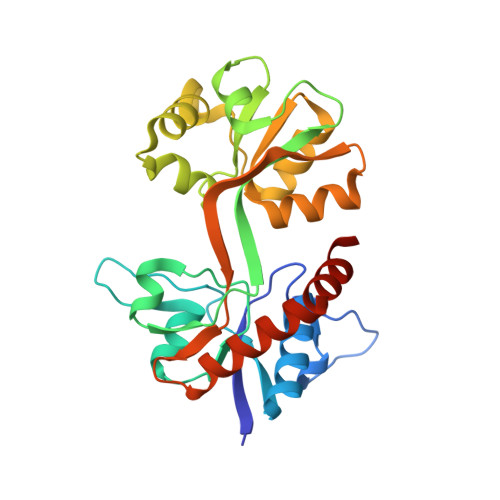N-(7-(1H-Imidazol-1-yl)-2,3-dioxo-6-(trifluoromethyl)-3,4-dihydroquinoxalin-1(2H)-yl)benzamide, a New Kainate Receptor Selective Antagonist and Analgesic: Synthesis, X-ray Crystallography, Structure-Affinity Relationships, and in Vitro and in Vivo Pharmacology.
Mollerud, S., Hansen, R.B., Pallesen, J., Temperini, P., Pasini, D., Bornholt, J., Nielsen, B., Mamedova, E., Chalupnik, P., Paternain, A.V., Lerma, J., Diaz-delCastillo, M., Andreasen, J.T., Frydenvang, K., Kastrup, J.S., Johansen, T.N., Pickering, D.S.(2019) ACS Chem Neurosci 10: 4685-4695
- PubMed: 31622082
- DOI: https://doi.org/10.1021/acschemneuro.9b00479
- Primary Citation of Related Structures:
6SBT - PubMed Abstract:
Selective pharmacological tool compounds are invaluable for understanding the functions of the various ionotropic glutamate receptor subtypes. For the kainate receptors, these compounds are few. Here we have synthesized nine novel quinoxaline-2,3-diones with substitutions in the 7-position to investigate the structure-activity relationship at kainate and α-amino-3-hydroxy-5-methyl-4-isoxazolepropionic acid (AMPA) receptors. Compound 11 exhibited the highest binding affinity across GluK1-3 while having selectivity toward kainate vs AMPA receptors. Compound 11 potently inhibited glutamate evoked currents at homomeric GluK1 and GluK3 receptors in HEK293 cells with K b values of 65 and 39 nM, respectively. The binding mode of 11 in the ligand binding domain of GluK1 was investigated by X-ray crystallography, revealing that 11 stabilizes the receptor in an open conformation, consistent with its demonstrated antagonism. Furthermore, 11 was tested for analgesic effects in the mouse tail flick test where it significantly increased tail flick latency at doses where 2,3-dioxo-6-nitro-1,2,3,4-tetrahydrobenzo[ f ]-quinoxaline-7-sulfonamide (NBQX) was ineffective.
- Department of Drug Design and Pharmacology, Faculty of Health and Medical Sciences , University of Copenhagen , DK-2100 Copenhagen , Denmark.
Organizational Affiliation:




















